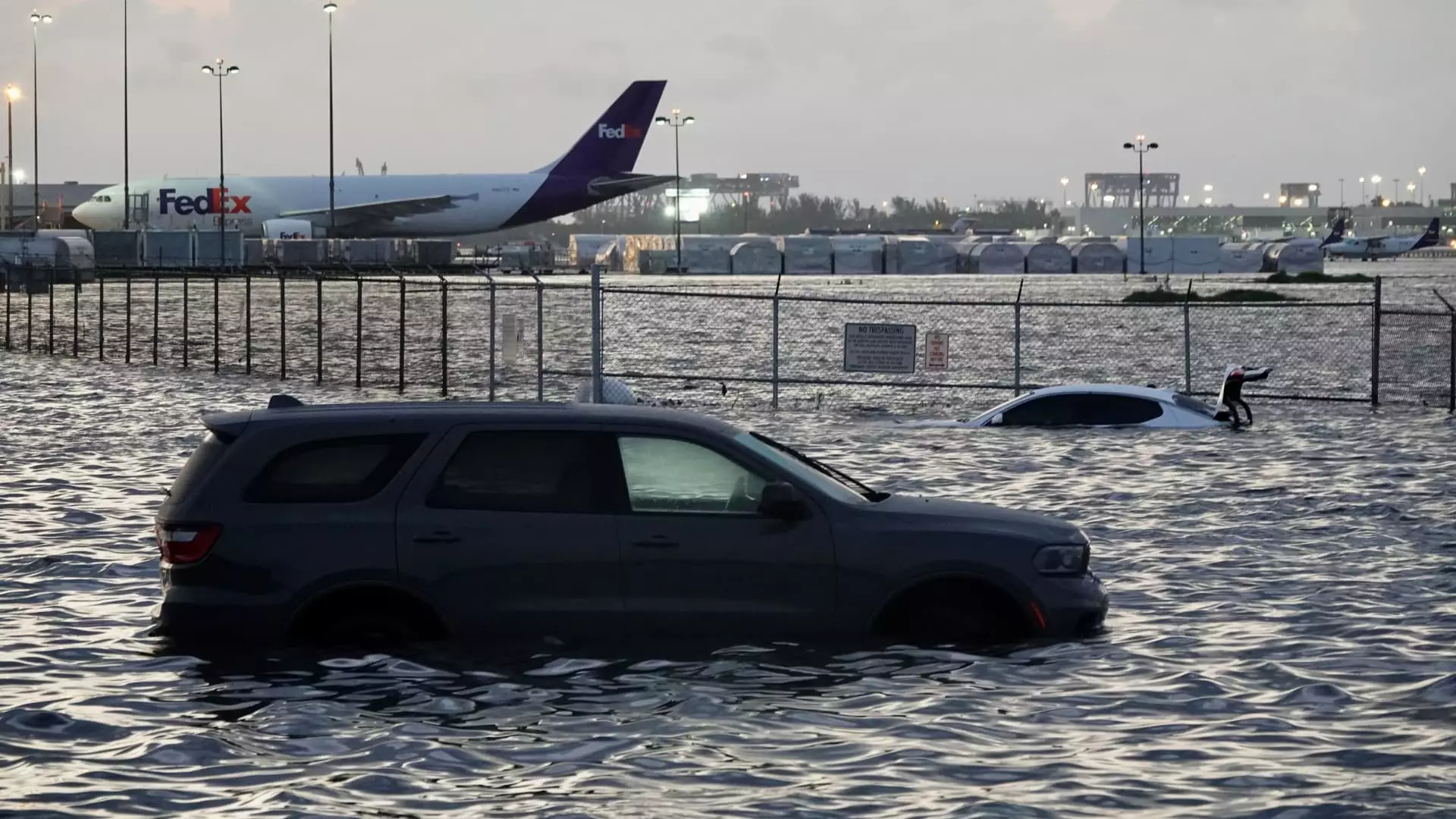In an era where the climatic landscape dramatically shifts, America’s infrastructure – long heralded as a backbone of national strength – is faltering significantly. The mounting evidence from recent years is unmistakable: our roads, bridges, airports, and communication networks are under siege, not just from neglect but from an unpredictable and increasingly hostile climate. The latest assessments paint a grim picture—an overall grade of “C” from the American Society of Civil Engineers hardly conceals the urgent reality that our infrastructure is fundamentally unprepared for the threats it faces today and will confront tomorrow. It is undeniably clear that the current approach, built on outdated designs and insufficient investment, is fundamentally flawed in the face of escalating climate challenges.
Climate Change: The Accelerant of Infrastructure Failure
Extreme weather events, once sporadic and localized, are now commonplace, and their intensity is growing. Flooding at Fort Lauderdale/Hollywood International Airport, where heavy rains turned runways into rivers, exemplifies the kind of chaos climate change can unleash. Meanwhile, in New York City, the scorching heat of summer expanded metal components on bridges to the point they became stuck open, halting traffic and endangering lives. These incidents reveal a common vulnerability: infrastructure designed for a climate of decades past, not the extreme conditions currently occurring or expected. The American Society of Civil Engineers emphasizes that every sector—airports, power grids, telecommunications—is increasingly compromised. Their latest risk models indicate that nearly one-fifth of all power infrastructure faces significant threats from floods, wind, or wildfires, illustrating the systemic risk we must confront.
Outdated Foundations in a Dynamic World
The tragic irony is that most of this infrastructure was conceived and constructed decades ago, based on climate patterns and technological standards no longer relevant. As a result, many structures are overmatched by the very challenges they are supposed to withstand. The issue transcends mere deterioration; it is a fundamental misalignment between infrastructure design and climate realities. This disparity is not only a threat to public safety but an alarming signal to investors who are increasingly cantankerous about financing projects in a landscape riddled with unanticipated disruptions. With climate risks embedded in infrastructure investments, the question for investors shifts from if to how they can adapt and safeguard their assets in a climate-volatile environment.
Science and Policy—A Critical Battleground
Efforts to bolster resilience hinge critically on the science of climate change. Both engineers and policymakers recognize that scientifically-informed planning is essential for adapting infrastructure to new realities. Yet, this scientific foundation faces systemic attacks, exemplified by the Trump administration’s aggressive cuts to agencies like NOAA, FEMA, and NIST—cornerstones of climate research and resilience planning. The weakening of these institutions jeopardizes our capacity to accurately assess risks and develop effective solutions. With fewer resources and diminished scientific credibility, the nation finds itself ill-equipped to face the present and impending crises. This disconnect between scientific knowledge and political will is a fundamental flaw that weakens our resilience and fuels the cycle of deterioration.
The Financial Mounting Crisis and Political Neglect
Addressing this crisis requires substantial financial commitment—an estimated $3.7 trillion over the next ten years, according to the ASCE. Yet, political priorities have consistently favored short-term gains over long-term resilience, exemplified by the recent scrapping of critical federal programs such as FEMA’s Building Resilient Infrastructure and Communities. These cuts are not mere budgetary slights; they represent a fundamental abandonment of proactive measures to mitigate future disaster impacts. The consequence is a paradox: while the climate crisis escalates, the political will and financial resources to combat it are simultaneously being curtailed, leaving the nation increasingly vulnerable.
America stands at a crossroads, with its infrastructure teetering on the edge of comprehensive failure if decisive action isn’t taken. The combination of climate change, outdated design paradigms, diminished scientific capacity, and political neglect creates a perfect storm that threatens to undermine the very foundations of national stability. While some may cling to the hope that technological innovation can rescue us, the truth remains that without robust policy reforms and strategic investments rooted in scientific reality, the decline will accelerate. We cannot afford to ignore these warning signs; the cost of inaction will be measured in lives lost, economic downturns, and a fundamental erosion of public trust in a system that once symbolized resilience and progress.

